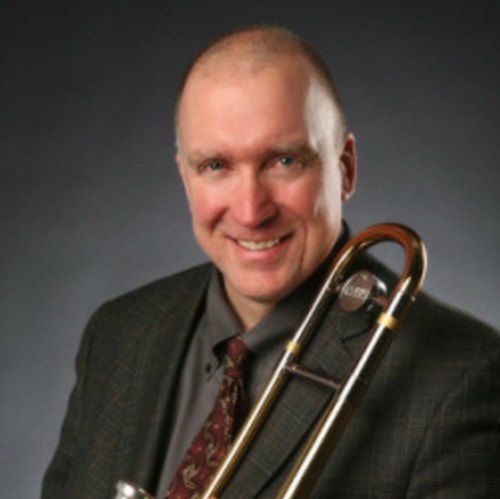
Warm-ups: Not Just For Concert Band
- Aug 24, 2023

The warm-up is often regarded as a critical part of the concert band rehearsal. It is a time for students to focus on the basics of breathing, sound production, intonation, and instrumental technique. If individual students have good control over these elements, the large ensemble will of course have more success. Warming up in the jazz ensemble, however, is not regarded quite as reverently in spite of the obvious benefits. This column will offer some suggestions for making this part of the jazz ensemble rehearsal efficient and productive.
One of the reasons the jazz warm-up is often ignored is that jazz rehearsal times are often severely limited. Many jazz ensembles meet outside of the school day and time is extremely short. Many times we feel that we do not have enough time to get through the music itself, much less have time for a warm-up. I know that sometimes I feel this way myself; and my rehearsals are a scheduled part of the day. It is important to remember that taking a few minutes for a good warm-up will result in a more productive rehearsal later on. We will accomplish more in the same amount of time.
Since many jazz ensembles meet at very early hours before school, it is all but guaranteed that jazz ensemble rehearsal will be the first playing the students do on that day. A good warmup in jazz rehearsal will not only prepare them better for the immediate rehearsal, but will also prepare chem better for the band rehearsal later in the day.
A good warm-up in any setting should focus on three things. First is warming up the chops and the instruments, second is warming up the fingers (and wrists!), and third is to establish a good center of pitch. Think of a jazz ensemble warm-up as being very similar to the concert band warm-up, but with a couple differences. Similarities include the importance of breathing, cone quality, intonation, scale and arpeggio exercises, and listening. The jazz warm-up is an excellent time to also introduce the element of improvisation, although any of these exercises could also be useful in a concert band setting. The jazz ensemble rhythm section also needs to be involved in the warmup. Knowing what you want to accomplish before you start is key to success and efficiency.
Long tones are a staple exercise for focusing breathing and tone production. I do them regularly, as does every other player I know. The long tone portion of the warm-up is an excellent opportunity to introduce some ear training to students. Play a pitch for your students, either on your instrument or on the piano, and have them match it using only their ears. Allow them time to search and experiment until they find it. Refrain from telling chem what the pitch is, and do not allow students to share the name of the pitch with each other. Force them to find it on their own. Once the ensemble has the collective pitch, use that as a long tone to get the chops going and to listen for intonation.
Repeat the exercise with several different pitches, moving into different registers as they become more comfortable. When students are comfortable with how the exercise goes (which should not take very long at all), appoint different students to give the pitch to the ensemble. This forces everyone to listen to different instruments and to listen to different registers. Do not allow the rhythm section to sit out for something like this. There is no reason chat guitar, piano, and bass cannot match pitch with the winds, and drums can play vibes or another mallet instrument.
To integrate the element of improvisation into this exercise, have the students establish a unison pitch, then have them freely improvise around it. Mode cir chord quality plays no bearing. When they are finished with their short improvisation have them gradually return to the unison pitch. The entire ensemble should then hold the unison until cut off. Even with the improvisation element added, an exercise like this can last anywhere from 2-10 minutes, depending upon how much time you can afford to devote to it.
Finger warm-ups are also very critical. In the concert band this is accomplished with scale exercises, usually on the major scale. In the jazz ensemble, take this opportunity to teach some scales that are more useful in jazz improvisation. Exercises based on the blues scale, and modes such as the mixolydian or dorian will not only get the fingers going, but will also benefit student improvisation. Context is also very helpful. Try to choose scale exercises in the key or mode of one of the pieces you plan on rehearsing, preferably immediately following the warm-up.
Printed scale exercises are available from a number of sources. The warm-ups in the Standard of Excellence Jazz Ensemble Method include all the scales used in the charts for the method, as well as the related arpeggios. Reading through even one of these exercises, especially if it relates to a chart that will be rehearsed, will be very helpful in getting the fingers warmed up and in getting the ears ready for the coming music rehearsal.
Another approach is to teach the scales by ear alone, using the pitch-matching exercise outlined above. This process takes more time, although it can be broken up into several rehearsals. Begin by teaching the root of the scale, and gradually add more pitches until the students know all the scale degrees. Again, depending on time, you may wish to add only a note per day or only two notes per day until the entire scale is learned. Even though it takes more time this way, students internalize the scale MUCH more using this approach.
Once the students are comfortable with the pitches of the scale you can then dictate to them, either by playing or describing, what rhythmic pattern you would like them to play. Do not neglect the rhythm section. Guitar, piano, and bass can do this exercise along with the winds. Drums can either play vibes or another mallet instrument, or play different grooves under the scale exercises. Experiment with this, playing the same scale pattern in different styles.
To improvise with a scale, allow students to improvise using only notes of the particular scale you are working on. This can be out of time, or your drummer can add any kind of groove you or the students choose. Choosing a groove similar to a piece or pieces you will be working on will be most productive. This exercise can also take from 2-10 minutes, depending on how much time you choose to focus on it.
The final element of the warm-up is tuning. Students should be allowed to warm up their chops, fingers, and instruments before the real fine tuning begins. Tuning can be approached in a number of different ways, and rotating between different tuning exercises is an excellent way to keep this part of the rehearsal fresh and interesting.
A vertical approach tunes the band from the bottom up. Begin by dividing the instruments into four voices related to their range. The bass instruments are baritone saxophone, trombone 4, and tuba. Tenor instruments are tenor saxophones, trombones 1, 2, and 3, and French horn. Alto instruments are alto 2 and trumpets 3 and 4, and clarinet. Soprano instruments are alto 1, trumpets 1 and 2, and flute. Using the piano as a reference pitch, tune all the bass instruments together. When they are comfortably in tune, add the tenor instruments. When the bass and tenor instruments are in tune add the altos, then continue with the sopranos. This exercise encourages players to listen through the vertical range of the ensemble, not just their own section.
A horizontal approach tunes the band from a different direction. Using piano as a reference pitch, have all the lead players (trumpet 1, trombone 1, and alto 1) tune together. Continue by adding players that are adjacent to the lead players. Continue expanding outward until the full ensemble is playing. Using standard instrumentation, the sequence would look like this. First group: lead players. Second group: trumpets 2-3, trombones 2-3, alto 2. Third group: trumpet 4, trombone 4, baritone sax, tenor 1. This encourages students to listen across their sections, and to focus on their lead player for pitch reference.
Do not neglect the rhythm section when tuning. Make certain that the bass and guitar are tuned properly before proceeding. Again, use the piano as a reference pitch. All of the above exercises can be accomplished within 5- 7 minutes, although you are welcome and encouraged to stretch them out and to get creative. The time invested will be rewarded with a more productive rehearsal, and ultimately a much better performance.
Published in Kjos Band News, Fall 2004, Volume 10 Copyright © 2004 Neil A. Kjos Music Company

Dean Sorenson is a prolific and highly sought after composer, trombonist, and clinician. His most recent publications, the Standard of Excellence Jazz Ensemble Method, Advanced Jazz Ensemble Method, and Jazz Combo Session, are a "must-have" for developing jazz ensembles and combos.
Dean holds degrees from the University of Minnesota and the Eastman School of Music and is Interim Director of Jazz Studies and Performance at the University of Minnesota-Minneapolis. He spent two years touring the United States and Japan with the Glenn Miller Orchestra, playing trombone and writing many arrangements for the band. Dean is a Yamaha performing artist and maintains an active freelance schedule, playing for touring shows and a wide variety of local groups.





